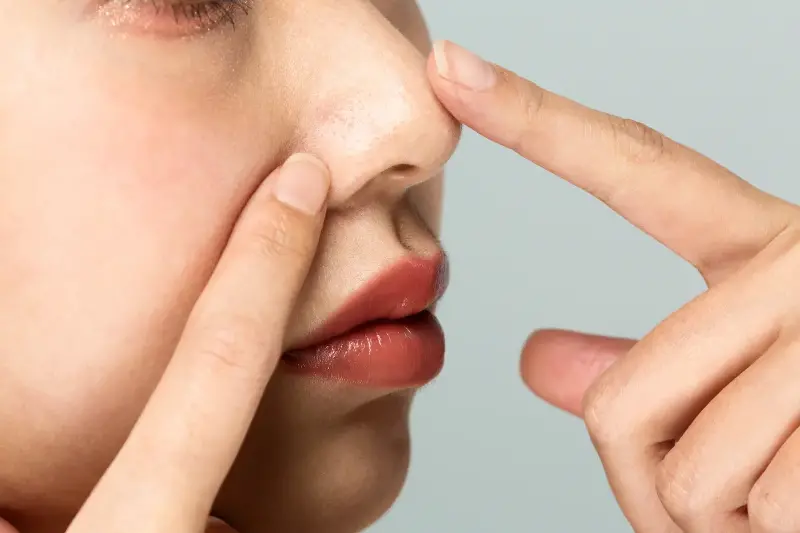Have you ever peered into the mirror and noticed tiny dark dots speckling your nose? If so, you’ve joined the ranks of millions puzzling over whether these are stubborn blackheads, dirt, or simply ‘clogged pores.’ The surprising truth is both simpler and more fascinating than most skincare myths would have you believe. Let’s journey beneath the surface to uncover the real science of sebum and nose dots—and how masterfully managing them could unlock smoother, clearer skin for you.

What Actually Are Those Nose Dots?
At first glance, those little dots might look like miniature blackheads embedded in your skin. But the majority are something different: sebaceous filaments. These are natural, tube-like structures that channel oil (sebum) from your sebaceous glands to the skin’s surface. Think of them as the skin’s plumbing system, not invaders.
Sebum, the star player in this story, is an oily substance your skin produces to moisturise and protect itself. When this oil fills the hair follicles on your nose, it combines with dead skin cells and forms visible dots—sometimes greyish or yellow rather than truly black. This is often confused with blackheads, but there’s a vital distinction:
- Sebaceous filaments: Uniform in size, usually flush with the skin, and a normal part of your complexion.
- Blackheads: Clogged pores full of hardened oil and bacteria, darker and slightly raised.
The world beneath the surface is far more organised than it appears—these dots are your skin’s way of staying healthy and balanced.
Why Your Nose Is the Hotspot
Ever wondered why these dots love your nose so much? It’s all down to density: the area around the nose is packed with overactive sebaceous glands. Combine that with a thicker skin texture and more prominent pores, and you have the perfect recipe for oil and dead skin to mingle, forming visible filaments.
Your skin’s oiliness can be influenced by:
- Genetics—some of us just produce more oil.
- Hormonal fluctuations—in both men and women, puberty, menstrual cycles, or stress can push glands into overdrive.
- Environmental factors—humidity, harsh skincare products, and pollution can all tip the balance.
Your nose isn’t betraying you—it’s working overtime to protect and hydrate your most exposed features.

Should You Exfoliate, Extract, or Ignore?
With clarity comes temptation: the urge to squeeze those dots or scrub them away. But should you?
- Exfoliate Gently: Gentle, regular exfoliation helps remove excess dead skin cells and prevents oil buildup. Opt for chemical exfoliants like salicylic acid, which penetrates oil, over harsh scrubs that can irritate delicate skin.
- Extract Sparingly: Professional extractions may be safe when done by a dermatologist, but squeezing at home can cause more harm—widening pores, damaging skin, and increasing inflammation.
- Moisturise Wisely: Don’t skip moisturiser, even if you have oily skin. The right, non-comedogenic moisturisers help balance oil production, preventing the skin from overcompensating.
What you see in the mirror is less about dirt, more about your body’s genius for self-regulation.
Achieving Clarity: Realistic Expectations and Bright-Skin Tips
It’s vital to know that while you can reduce the appearance of sebaceous filaments, you can’t eliminate them—nor should you want to. These structures are healthy, necessary, and universal.
To keep pores clear and skin radiant, try:
- Double cleansing at night to remove excess oil and impurities
- Applying a clay mask weekly to absorb excess sebum
- Using retinoids (with professional advice) to regulate cell turnover and oil flow
- Maintaining a balanced diet, as high-glycaemic foods may exacerbate oiliness
Clear skin isn’t about erasing what’s natural. It’s about finding balance, looking after your skin’s ecology, and appreciating the marvel in the mirror.
Understanding the real story behind sebum and nose dots reframes the quest for “perfect” skin—not as an endless battle, but as a partnership with our body’s ingenious systems. Perhaps the next time you notice those little dots, you’ll marvel at your skin’s complex, purposeful machinery. Could the secret to skin confidence be less about hiding imperfections, and more about embracing the wonders already at work?
